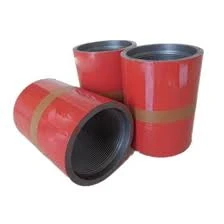- Afrikaans
- Albanian
- Amharic
- Arabic
- Armenian
- Azerbaijani
- Basque
- Belarusian
- Bengali
- Bosnian
- Bulgarian
- Catalan
- Cebuano
- Corsican
- Croatian
- Czech
- Danish
- Dutch
- English
- Esperanto
- Estonian
- Finnish
- French
- Frisian
- Galician
- Georgian
- German
- Greek
- Gujarati
- Haitian Creole
- hausa
- hawaiian
- Hebrew
- Hindi
- Miao
- Hungarian
- Icelandic
- igbo
- Indonesian
- irish
- Italian
- Japanese
- Javanese
- Kannada
- kazakh
- Khmer
- Rwandese
- Korean
- Kurdish
- Kyrgyz
- Lao
- Latin
- Latvian
- Lithuanian
- Luxembourgish
- Macedonian
- Malgashi
- Malay
- Malayalam
- Maltese
- Maori
- Marathi
- Mongolian
- Myanmar
- Nepali
- Norwegian
- Norwegian
- Occitan
- Pashto
- Persian
- Polish
- Portuguese
- Punjabi
- Romanian
- Russian
- Samoan
- Scottish Gaelic
- Serbian
- Sesotho
- Shona
- Sindhi
- Sinhala
- Slovak
- Slovenian
- Somali
- Spanish
- Sundanese
- Swahili
- Swedish
- Tagalog
- Tajik
- Tamil
- Tatar
- Telugu
- Thai
- Turkish
- Turkmen
- Ukrainian
- Urdu
- Uighur
- Uzbek
- Vietnamese
- Welsh
- Bantu
- Yiddish
- Yoruba
- Zulu
steel coupling
Understanding Steel Coupling A Fundamental Element in Structural Engineering
In the realm of structural engineering, the significance of various components cannot be overstated. One such critical element is the steel coupling, a device extensively utilized to connect different sections of steel structures, ensuring both strength and stability. This article delves into the essential aspects of steel couplings, exploring their types, applications, and importance in modern engineering designs.
What is Steel Coupling?
Steel coupling refers to a mechanical device that enables two or more structural elements to be interconnected. Primarily made from robust steel materials, couplings provide the necessary mechanical integrity and force transmission between components in buildings, bridges, and other infrastructure. They can accommodate structural movements, such as expansion and contraction due to temperature changes, as well as vibrations from environmental forces.
Types of Steel Couplings
There are several types of steel couplings, each serving unique functions based on the specific structural requirements. Some common types include
1. Rigid Couplings These are used in applications where there is no need for angular alignment or axial displacement. Rigid couplings ensure that the connected components remain fixed relative to one another, making them ideal for applications requiring high strength and stability.
2. Flexible Couplings As the name suggests, flexible couplings allow for some degree of movement and misalignment between connected components. They are particularly essential in dynamic systems where vibration and thermal expansion may affect the connection.
3. Slip Couplings These couplings permit limited movement, providing a way to manage slight variations in alignment or spacing. Slip couplings can absorb shock loads and accommodate minor misalignments without compromising the integrity of the structure.
4. Adjustable Couplings Commonly used in construction, adjustable couplings allow for fine-tuning of connections after installation. This feature is particularly advantageous in situations where precise alignment is critical.
steel coupling

Applications in Engineering
Steel couplings are indispensable across various applications in civil engineering and construction. They are fundamental in
- Steel Frames In high-rise buildings, steel couplings ensure the stability of the framework by connecting beams, columns, and girders
. Their strength is crucial in maintaining the overall structural integrity under load and ensuring safety.- Bridges The dynamic nature of bridge structures necessitates the use of steel couplings to accommodate movement caused by traffic, temperature changes, and environmental forces. Couplings help distribute loads evenly, preventing stress concentrations that could lead to failure.
- Industrial Equipment In various machinery and equipment, steel couplings allow for the transmission of power between shafts. They facilitate the alignment of rotating elements while minimizing the risk of wear and tear.
Importance of Steel Couplings
The importance of steel couplings in structural engineering cannot be understated. Their role in enhancing the safety, longevity, and reliability of structures is vital. By allowing for flexibility, adaptability, and resilience in construction, steel couplings help engineers design robust systems that can withstand the challenges posed by environmental factors and operational demands.
Moreover, the advancement of materials and manufacturing processes has led to the development of specialized steel couplings that further optimize performance. For instance, the use of high-strength steel alloys has improved the tensile strength of couplings, making them suitable for more demanding applications.
Conclusion
In conclusion, steel couplings play a pivotal role in the integrity of modern engineering structures. As essential components that facilitate connections between different parts of a framework, they contribute significantly to the overall performance and safety of buildings, bridges, and industrial systems. As engineering techniques and materials continue to evolve, the role of steel couplings will remain crucial, ensuring that structures are not only functional but also resilient against the myriad forces they encounter throughout their lifespan. Understanding and utilizing steel couplings effectively is a cornerstone of achieving excellence in structural design and engineering.
-
Tubing Pup Joints: Essential Components for Oil and Gas OperationsNewsJul.10,2025
-
Pup Joints: Essential Components for Reliable Drilling OperationsNewsJul.10,2025
-
Pipe Couplings: Connecting Your World EfficientlyNewsJul.10,2025
-
Mastering Oilfield Operations with Quality Tubing and CasingNewsJul.10,2025
-
High-Quality Casing Couplings for Every NeedNewsJul.10,2025
-
Boost Your Drilling Efficiency with Premium Crossover Tools & Seating NipplesNewsJul.10,2025







